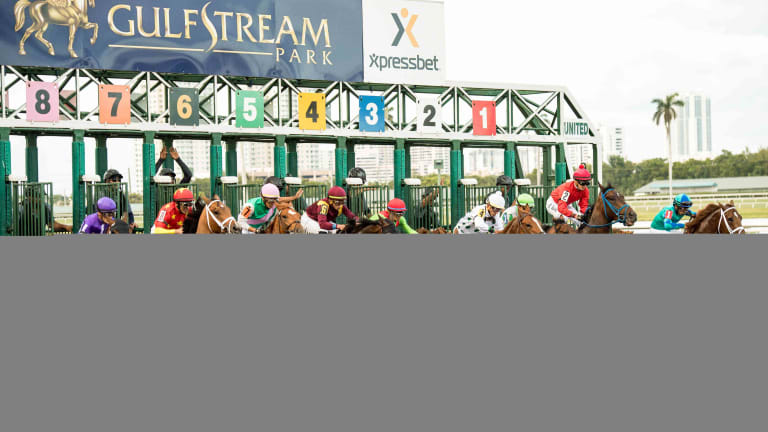
Business As Usual For Saturday's Florida Derby -- But Why?

As one of the key prep races for the Kentucky Derby, Saturday’s Florida Derby has one major question looming over the 69th edition of Gulfstream Park’s marquee race for 3-year-olds:
Why?
As in, why is Gulfstream Park among a handful of tracks continuing to operate in the midst of the COVID-19 pandemic?
Most major racetracks across the country have postponed or delayed their meets, some of the expense of major races. Racing in New York is shut down. Kentucky, too. But Gulfstream, Tampa Downs, Oaklawn, Santa Anita and Golden Gate are the major circuits still powering on.
There are no fans in the stands. Those tracks have limited access on race days to key personnel. They all claim to be taking the necessary precautions.
But the New York Racing Association (NYRA), which shut down the Aqueduct meet indefinitely, recently announced five positive tests for the coronavirus on the Belmont Park backstretch (where horses train) since the first case on March 19.
Broward County, where Gulfstream is located, has ordered the closing of all non-essential businesses. But Gulfstream will continue racing, at least until Saturday, in a state where social distancing apparently means packed beaches, spring break partying and business as usual.
Gulfstream says it has 1,000 caretakers who live and work on its backstretch. No one wants to see any of them out of a job. But 1,000 people interacting on the backstretch on a daily basis – less than two weeks after Hall of Fame rider Javier Castellano tested positive for the coronavirus – seems to be tempting the viral fates.
Yes, racing is conducted outdoors. And yes, someone has to care for the horses, grooming, feeding, keeping them in shape, even if racing is halted. Racing is also the rare sport that can at least survive without fans in the stands because so much wagering is now done online.
But is it worth the risk? Even those televising the sport now when races are held are doing so from home thanks to modern technology. Why are some racetracks exempt from the sacrifices and disruption to our normal routine that the rest of the country is enduring?
Like every other sport, horse racing’s world has been turned upside down. The Kentucky Derby, a fixture the first Saturday in May, will now be run the first Saturday in September. So what is the point of the Florida Derby now, since the Kentucky Derby is five months – not five weeks – away?
Keeneland lost its prestigious spring meet. The Triple Crown series hasn’t been settled beyond the Kentucky Derby. Tracks are being shut down everywhere (Aqueduct may be transformed into a temporary hospital) in response to precautions needed to curb the pandemic. Yet California and Florida, two highly populated states, continue to have two tracks racing. The hardship on horsemen and backstretch personnel would no doubt be crippling if these tracks closed for a while. But isn’t that the case across the country for far too many workers and businesses?
Sacrifice is part of this pandemic. Horse racing needs to do its part and take a break.